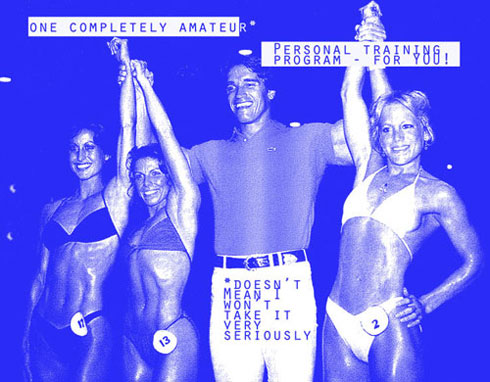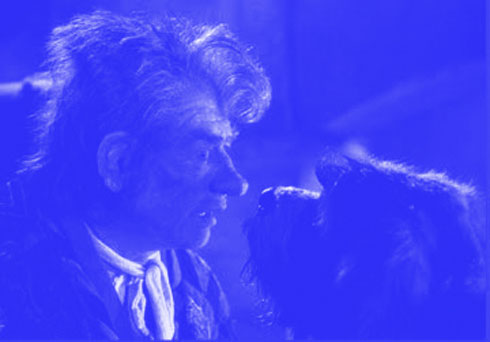A Stock Exchange






 Text: Millie Stein Images: A Stock Exchange
Text: Millie Stein Images: A Stock Exchange
Few exchanges are innocent. If history could tell us only one thing about giving, it’d be to watch out for a sting in the guise of a fair trade. Notwithstanding acts of genuine altruism – although the motivation for these is debatable – there is something slightly sinister about swapping.
Presented as part of the 2011 Imperial Panda Festival, which runs for three weeks in March, A Stock Exchange will grapple with ego, misinformation and the ever-present threat of lost dignity in the name of a good swap.
It works like this: you make an offer. A judiciary committee (organisers Amelia Groom, Robert Milne and Jack Jeweller) considers your offer. Then they consider everyone else’s offers. They allocate pairs and the swaps take place. Documentation must be provided, for display in a soon-to-be-built Chippendale venue, Freda’s, which will function as ‘head office’ for the duration of the event.
I traded company for conversation with Amelia Groom to find out exactly what A Stock Exchange is offering.
Millie Stein: Tell me how A Stock Exchange came about.
Amelia Groom: For the last two festivals, Imperial Panda has primarily showcased independent theatre and performance art, but this year they wanted to expand into visual arts and music. Rob Milne, Jack Jeweller and I were asked to look after the art component. Initially we played with some ideas for curating an exhibition that would run for the duration of the festival, then we decided we wanted to make it something more fluid, something that would grow and have a strong element of chance, which I think is more in the spirit of Imperial Panda.
It turns out our project coincides nicely with this thing that is happening around the same time in New York with the American artist Sol LeWitt – who, for several decades, had been swapping his art with other artists. He is obviously very collectable and renowned, but he swapped with art students and unknowns all around the world, so there’s this extensive collection of swapped artworks. We are applying a similar idea it in a decentralised way, so that it was not just one person swapping with many but many people – practicing artists or otherwise – swapping amongst themselves.
We wanted to bring together everyone we know and like, people who we thought would have great ideas, and also open it up to the public and just see what would happen. The other motivation was that, a couple of years ago, some friends of mine were having an auction to raise money for something and asked me to donate. I was moving house and didn’t have any stuff, so I said I’d offer to repair some clothes. The successful bidder became a friend and we have been buddies ever since – the act of repairing his clothes entailed forming a material and a metaphorical bond, I think.
MS: Can you tell me a bit about the conceptual basis for the idea of the ‘swap’?
AG: I’ve read a bit lately on histories and theories of currency, gift-giving and exchange. The sociologist Marcel Mauss convinced himself that far from being voluntary, disinterested and spontaneous, the phenomena of the gift entails the obligation to give, the obligation to receive, and the obligation to return. Failure to complete any of these obligations results in loss of dignity.
I also read a strange essay by Ralph Waldo Emerson called The Gift, which draws similar conclusions. Being easily seduced by cynicism, I was thinking that this project isn’t really about generosity or forming new friendships, but about looking at the power play involved in all exchange. I don’t know. It’s interesting to think about how arbitrary value is. And money – it’s really just consensus. Without consensus on its worth, it fails. We take it for granted now but that consensus took centuries to build after they introduced paper money in China – they couldn’t get it to work. On the Island of Yap they have these big disk things called Rai stones, made of solid limestone with a hole in the middle so they are able to be carried on a stick. They’re like money, so you can spend them on coconuts or women or whatever you want, except that the value of a Rai stone is ascertained according to how many people have died quarrying it.
These are some of the things I’ve been thinking about, but we’re not imposing the ideas onto the project in any way. In exchange for someone’s homemade cake decorated to the theme of ‘cold hard cash,’ I will be swapping an illegitimate paper photocopy I made of a book called The Story of Paper Money by Yasha Beresiner and Colin Narbeth, featuring a new original counterfeit money cover. So much for our policy of non-monetary exchanges.
MS: I was looking for information on Sol LeWitt’s exchanges and someone had written about him as a ‘protagonist of conceptual art, outsourced’. In the instance of an exchange, what is the difference between outsourcing and curating?
AG: We were originally going to curate something, but we don’t think of our role in this as curatorial. We think of ourselves as facilitators or pimps. Or co-ordinators. Dictators, perhaps. We want to set up the space as an office with Microsoft Powerpoints and white boards. We will sit there so people can come in and see the documentation of the exchanges, ask about the project or make an offer, and be paired up by us, kind of like a dating agency. I really like that process. When we’ve been allocating the offers so far, we think about which offer is appropriate for which offer, but also whether the people know each other – preferably not. Also, because we know most of the people who have made offers so far, we consider, to an extent, their personalities. Although, I should say, some are randomly allocated.
MS: What is the purpose of the space?
AG: Generally, the space is there to present all the offers in a slideshow on a screen, comprised of people’s visual representations and their description of the offer. The documentation of the swaps will be on another screen, but that will be an evolving thing as a lot of the swaps will take place over the course of the show. Because we’re interested in the process of inviting people – working with them to finalise their ideas and allocating their swaps – that’s all part of what’s on show as well. At the moment we think that information will be printed out on the tables, and I think Jack will do that. Rob has designed a lovely website where you can register an offer, hear more about the project and see the list of what we’re saying is ‘currently on the market’. From March 5, all the allocations will be announced on the website.
MS: What would constitute an appropriate pairing?
AG: With some, we’ve treated them quite literally. A local artist and designer, Olivia Mai, offered to create a portrait of her exchanger in felt and hand stitching, and another Melbourne-based artist, Lillian O’Neil, offered to make an original movie poster featuring her exchanger as an action hero. So we swapped those two, which I really liked because they don’t know each other and don’t have mutual friends as far as I know. They’ve exchanged photographs of themselves on email and are both currently working on pictures of each other.
MS: How much have people’s individual backgrounds influenced their response? Does it make a difference if they are already working in a creative field?
AG: When we approached practicing artists, we tried to encourage them to think of this as something that is outside their practice. Some artists have offered works that they have already done and some have made relational offers that are very fitting with their existing practice. Other people have something right away, but they’re not necessarily people who have art practices. They just think, ‘Oh yeah, I’m really good at sharpening knives so that’s my offer’. One of our friends decided pretty quickly that her offer would be a Feng Shui service for the person’s bedroom, with influence from Martha Stewart. She’s obsessed with domesticity and manners at the moment. Some people just get it, although a lot of people have said they love the idea but they find it daunting. They need more time; they change their mind… the feedback we’ve got has been interesting. At our first meeting where we came up with the idea, we made a list of maybe thirty people and went through and said, ‘They could do this, they could do that’. We thought that we’d go to them with a suggestion but make it clear that they could do anything they wanted. Certain artists who we thought would do a certain thing have gone beyond what they usually do. Nobody went for our suggestions. I don’t think anyone has done what we thought they would, which is great.
A Stock Exchange will be accepting further offers until 5 March.
Opening 10 March, 6-8pm
Freda’s, 109 Regent St, Chippendale
Visit their website to make an offer and find out more about the event.
The Imperial Panda Festival will run from 4–20 March at various venues throughout Sydney.
Next story: In Search Of Space – Hawkwind



